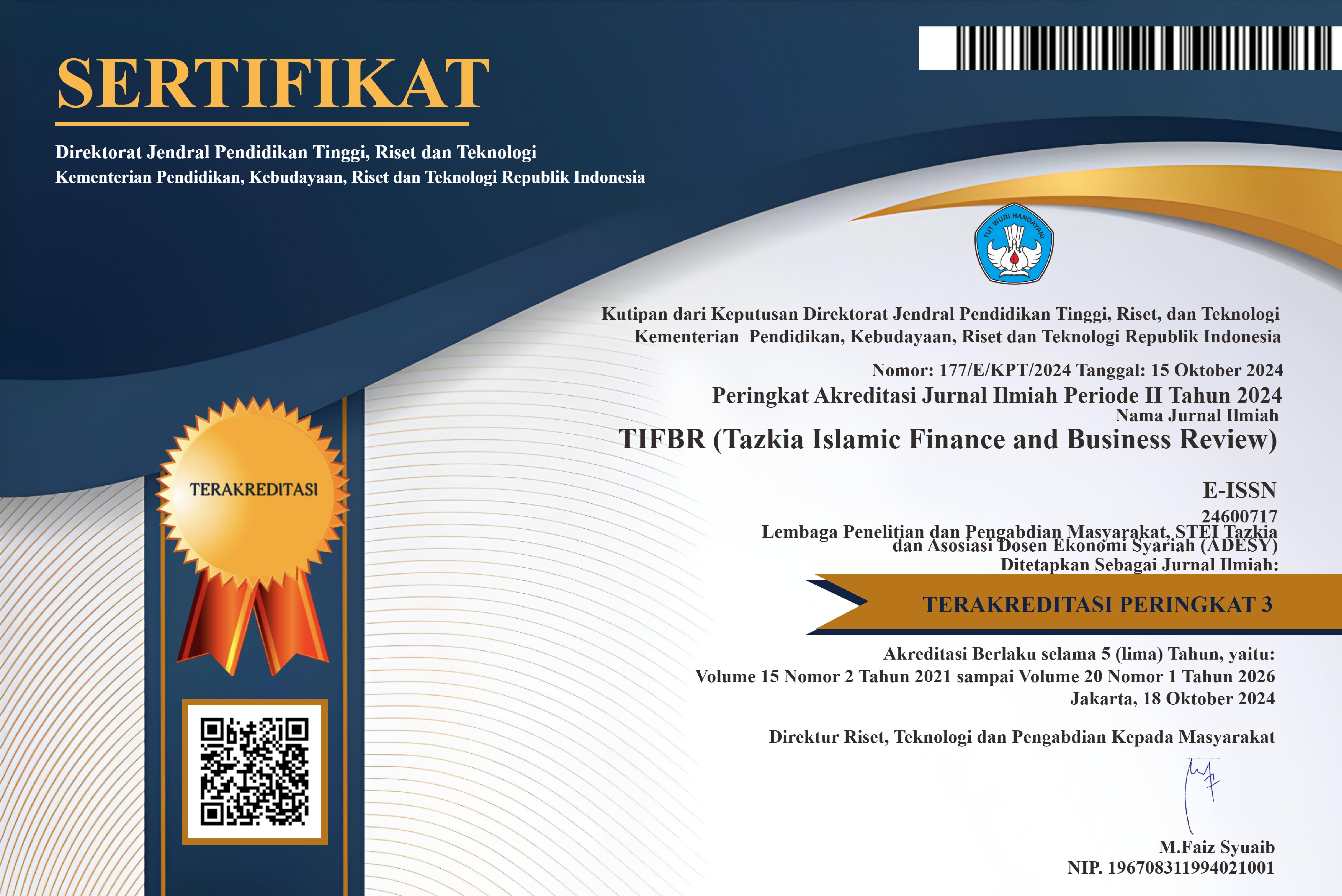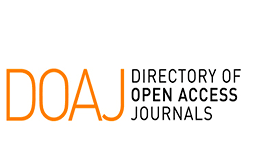Comparative Analysis of Agricultural Financing in Some Countries
DOI:
https://doi.org/10.30993/tifbr.v11i1.134الكلمات المفتاحية:
Agricultural Finance، Agricultural Bank، Partnership Contractالملخص
Abstract. This study aims to find the similarities and differences in financing practices that occurred in The Agricultural Bank of Iran, China, Sudan, Malaysia and Baitul Maal wat Tamwil in Indonesia, and to obtain best farmers and agricultural enterpreneurs financing practices. This study used qualitative approach. Case study is selected as strategy in this research. The method of data collecting is documentation. Data is obtained from websites and annual reports of each agricultural bank. The data collected is the bank's policy data on financing distributed to farmers and agricultural enterpreneurs. Agricultural Bank of China uses interest based product. This bank offer flexible loan and flexible time of payment. Agricultural bank in Iran and Sudan offer partnership and constant profit financing products to farmers. Malaysia and BMT Sidogiri in Indonesia offer constant profit contract. But their financing contract, tawarruq and Bay al Wafa are still controversial contracts. Observed agricultural banks have been using sharia priciples, except for Agricultural Bank of China. The financing product that has been used since the time of the Prophet has been applied by the agricultural banks. However, there are still controversial financing used by these banks.
المراجع
Ahmad, E. F., Shihama, M., Tarmizi, N. A. bt M., Jibril, S. M., Djama, S. I., and Muneeza, A. (2017). Tawarruq as a Product for Financing within the Islamic Banking System: A Case Study of Malaysian Islamic Banking System. International Journal of Management and Applied Research, Vol. 4(1): 31–43.
Ahmed, E. A., Faki, H. H. M., and Hussein, A. (2012). Role of Agricultural Finance in Producing Food Crops. International Journal of Agriculture and Forestry, Vol. 2(2): 10–15. Available at: http://doi.org/10.5923/j.ijaf.20120202.03
Al-Masri, R. Y. (2006). Renting an Item to Who Sold It Is It Different from Bay Al-Wafa Contract ? Islamic Economic Journal, Vol. 19(2): 39–42.
Arshad, N. C. (2010). Shariah Parameters for Musharakah Contract: A Comment . International Journal of Business and Social Science, Vol. 1(1): 145–162.
Asaad, M. (2011). Peningkatan Peranan Perbankan Syariah untuk Pembiayaan Usaha Pertanian. Miqod, Vol. 35(1): 113–127.
Ashraf, S. H., and Giashi, A. A. (2011). Islamic Banking in Iran - Progress and challenges. Kuwait Chapter of Arabian Journal of Business and Management Review, Vol. 1(2): 31–44.
Bardhan, P., and Mookherjee, D. (2011). Subsidized Farm Input Programs and Agricultural Performance: A Farm-Level Analysis of West Bengal’s Green Revolution, 1982–1995. American Economic Journal: Applied Economics, 186–214.
Dusuki, A. W. (2008). Understanding the objectives of Islamic banking: a survey of stakeholders’ perspectives. International Journal of Islamic and Middle Eastern Finance and Management, Vol. 1(2): 132–148. Available at: http://doi.org/10.1108/17538390810880982
Ehsan, A., and Shahzad, M. A. (2015). Bay Salam: A Proposed Model for Sharia Compliant Agriculture Financing. Business and Economic Review, Vol. 7(1): 67–80.
Fasih, F. (2012). Inclusive growth in India through Islamic banking. In International Conference on Emerging Economies – Prospects and Challenges, Vol. 37: 97–110. Available at: http://doi.org/10.1016/j.sbspro.2012.03.278
Ismal, R. (2009). Assessing Moral Hazard Problem in Murabahah Financing. Journal of Islamic Economics, Banking and Finance, Vol. 5(2): 101–112.
Ismal, R. (2014). Assessing The Gold Murabahah in Islamic Banking. International Journal of Commerce and Management, Vol. 24(4): 367–382. Available at: http://doi.org/10.1108/IJCoMA-05-2012-0034
Kaleem, A. and Wajid. (2009). Application of Islamic Banking Instrument (Bai Salam) for Agriculture Financing in Pakistan. Available at: http://doi.org/10.1108/00070700910941471
Khasanah, U. et al. (2013). The Practice of Profit and Loss Sharing System For Rice Farmers in East Java , Indonesia. International Research Journal of Finance and Economics, Vol. 9(3): 1–7.
Kudus, and Naghfir. (2017). Efektivitas Akad Pembiayaan Bai Al Wafa Pada Baitul Maal Wat Tamwil. Arena Hukum, Vol. 10(1): 1–19.
Mohsin, M. I. A. (2005). The Practice Of Islamic Banking System In Sudan. Journal of Economic Cooperation, Vol. 4(26): 27–50.
Nasution, Z. (2016). Model Pembiayaan Syariah untuk Sektor Pertanian. Jurnal DINAR Ekonomi Syariah, Vol. 1(1): 1–12.
Ngasifudin, M. (2016). Aplikasi Muzara’ah Dalam Perbankan Syariah. Jurnal Ekonomi Syariah Indonesia, Vol. 6(1): 38–44.
Omorogiuwa, O., Zivkovic, J., and Ademoh, F. (2014). The Role Of Agriculture in The Economic Development Of Nigeria RIA Omorogbe Omorogiuwa. European Scientific Journal, Vol. 10(4): 133–147.
Ridhwan, M., Aziz, A., and Yusoff, M. M. (2013). Financing for Agro Projects in Islamic Banks. In International Conference on Agriculture and Biotechnology, Vol. 60: 14–18. Available at: http://doi.org/10.7763/IPCBEE.
Ridhwan, M., Aziz, A., and Yusoff, M. M. (2014). Identifying Risks of Financing for Agro Projects in Islamic Banks. International Journal of Technical Research and Applications, Vol. 4(4): 29–33.
Rouf, K. A. (2013). Islamic Sharia-based Group Microlending Initiative and Implementation Trajectory Experience in Kandahar. Journal Research in Peace, Gender and Development, Vol. 3(8): 133–141.
Sanrego, Y. D., and Rusydiana, A. S. (2009). Peran Perbankan Syariah dalam Mendorong Agro Investasi. Jurnal Keuangan Dan Perbankan, Vol. 13(2): 311–324.
Shafiai, M. H. M., and Moi, M. R. (2015). Fitting Islamic Financial Contracts in Developing Agricultural Land. Global Journal Al-Thaqafah, Vol. 5(1): 43–49.
Shafiai, M. hakimi M. (2017). Financial Problems among Farmers in Malaysia : Islamic Agricultural Finance as A Possible Solution. Asian Social Science, Vol. 11(4): 1–16. Available at: http://doi.org/10.5539/ass.v11n4p1
Siddiqui, A. (2008). Financial Contracts, Risk and Performance of Islamic Banking. Managerial Finance, Vol. 34(10): 680–694. Available at: http://doi.org/10.1108/03074350810891001
Suharto, U. (2013). Contentious Sales in Islamic Banking and Finance: Analysis on Their Proximity to Riba. IKIM Journal of Islam and The Contemporary World, Vol. 6: 55–82.
Suryawardani, B., and Hasbi, H. (2013). Ther Performance of Islamic Banking on Mudharabah Financing In Indonesia. In Brawijaya International Conference on Accounting and Business: 29–30.
Wagan, S. A., Rahman, A., Shuanxi, X., and Noonari, S. (2016). Significance of Agricultural Finance in Agricultural and Rural Development of Pakistan “ A Case Study of Qambar Shahdadkot District.” European Journal of Business and Management, Vol. 8(16): 64–70.
Young-kon, K. (2013). An Integrated Value Chain Finance in Agriculture: Experience of Agricultural Cooperatives in Korea. In Presented at the Policy Dialogue Forum on Value Chain Finance in Agriculture: 3–5.
Zandi, G., Ariffin, N. M., and Shahabi, A. (2012). Some issues on Murabahah practices in Iran and Malaysian Islamic banks. African Journal of Business Management, Vol. 6(24): 7066–7073. Available at: http://doi.org/10.5897/AJBM11.2859
التنزيلات
منشور
كيفية الاقتباس
إصدار
القسم
الرخصة

Tazkia Islamic Finance and Business Review (TIFBR) is licensed under a Creative Commons Attribution-NonCommercial 4.0 International License.
Authors who publish with this journal agree to the following terms:
- Authors retain copyright and grant the journal right of first publication with the work simultaneously licensed under a Creative Commons Attribution License that allows others to share the work with an acknowledgment of the work's authorship and initial publication in this journal.
- Authors are able to enter into separate, additional contractual arrangements for the non-exclusive distribution of the journal's published version of the work (e.g., post it to an institutional repository or publish it in a book), with an acknowledgment of its initial publication in this journal.
- Authors are permitted and encouraged to post their work online (e.g., in institutional repositories or on their website), as it can lead to productive exchanges, as well as earlier and greater citation of published work (See the Effect of Open Access).
















